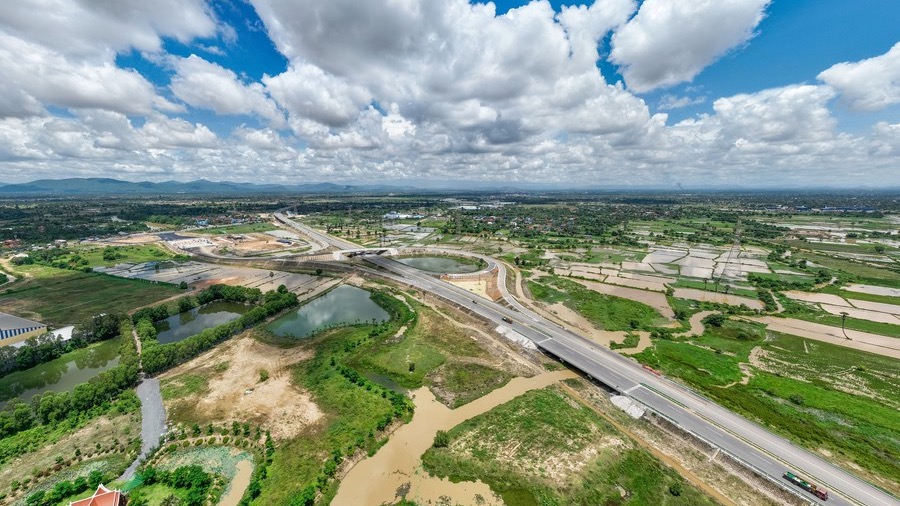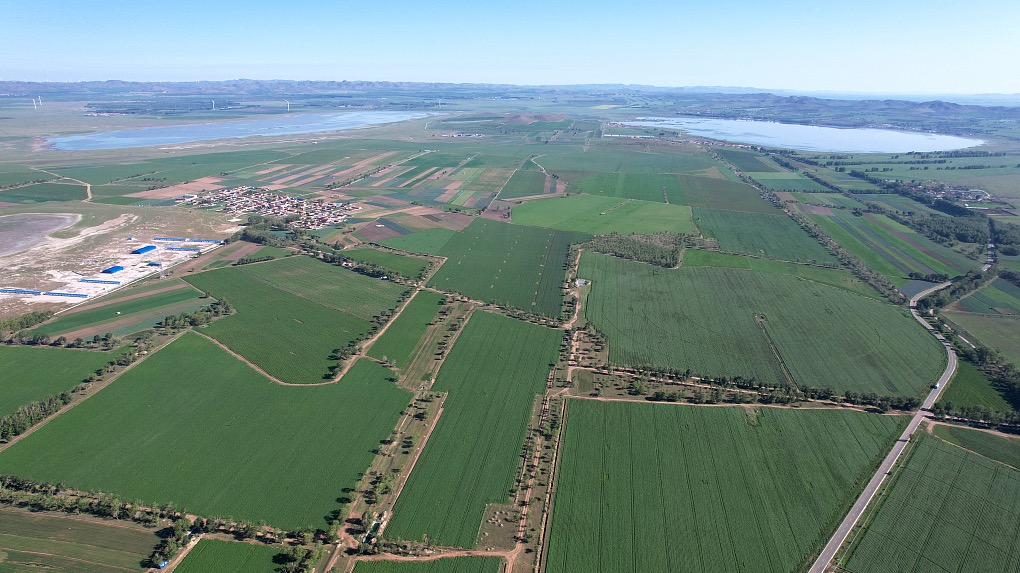
Aerial photo shows the Phnom Penh-Sihanoukville Expressway project in Kampong Speu Province, Cambodia, June 24, 2022. /Xinhua
Aerial photo shows the Phnom Penh-Sihanoukville Expressway project in Kampong Speu Province, Cambodia, June 24, 2022. /Xinhua
Editor's note: Hafijur Rahman, a special commentator on current affairs for CGTN, is a columnist and security and strategic analyst, working in a prominent Strategic Studies Center in Bangladesh. The article reflects the author's opinions and not necessarily the views of CGTN.
Throughout its intervening ten years since it was launched in 2013, the China-proposed Belt and Road Initiative (BRI) – a multi-decade, continent-spanning policy and investment program aiming to forge economic integration among the countries from Asia, Africa, Latin America, and Europe – has always undergone policy recalibration, structural re-modeling, and prudent re-adjustments in line with local and global needs and exigencies.
As climate change poses an increasing threat to human existence and calls for concerted actions become more urgent, the biggest challenge facing the world is the sustainable adaptation of human economic and developmental activities in response to the changing climate. To this effort, China has increasingly green-aligned its overseas BRI projects, with a broader and more transformative focus on environmental sustainability. Greening the BRI underscores China's firm commitment to promoting a low-carbon global economy as a responsible international stakeholder.
According to new research published on August 1, China's overseas energy engagement in the BRI countries in the first half of 2023 was the "greenest" in terms of project type since its start in 2013. According to research conducted by the Green Finance and Development Center (GFDC) at Fudan University in Shanghai, China invested $8.61 billion in energy projects in the BRI countries during the first half of this year. 56 percent of this investment was allocated towards renewable energy projects such as solar, wind, and hydropower. It is expected that 2023 will see the largest investment in green energy projects.
The findings of the well-extensive GFDC research reflect a tremendous leap in China's years-long quest and pragmatic efforts for ensuring environmental sustainability across its overseas BRI projects and a shift from the initial engagement and investment pattern, most notably its investments in energy infrastructures.
For example, between 2014 and 2017, over 95 percent of these cross-border investments in the energy sector by Chinese state-owned enterprises were in fossil fuels. It amounts to no criticism as the experts illustrated, given that the emphasis on investing in fossil fuels primarily resulted from the convergence of three contemporary factors: developmental demands in developing countries, affordability of coal as an alternative to renewable energy, and China's surplus capacity in building energy infrastructure.
But with the number of renewable energy projects rising exponentially over the years in the BRI countries, the share of fossil fuels engagement in the program, as the GDFI research showed, has drastically fallen – its lowest this year since the program's inception in 2013.
According to the report, fossil fuels now account for only 44 percent of energy engagement in the BRI countries – which was around 61 percent in 2022, a drastic 17 percentage point decline over a six-month period. With China's clear vision for and strict guidance toward "promoting the green and low carbon development of overseas coal-fired plants which have already been built," the share of green energy engagement is expected to see a radical rise in the years ahead.
China's significant strides in its efforts to increasingly green-align the BRI are, in fact, the cumulative outcome of its prudent policy measures adopted over the last several years. Greening the BRI aligns with China's principled positions in promoting economic and environmental sustainability both domestically and internationally.

A view of farmland in Guyuan County, Zhangjiakou City, north China's Hebei Province, July 15, 2023. /CFP
A view of farmland in Guyuan County, Zhangjiakou City, north China's Hebei Province, July 15, 2023. /CFP
In September 2020, China announced its goals to achieve peak carbon emissions by 2030 and carbon neutrality by 2060. Furthermore, in his address to the 76th session of the United Nations General Assembly in September 2021, Chinese President Xi Jinping pledged to build no new coal-fired power plants overseas – and China delivered on its pledge as the report found no new coal engagement this year.
To get its climate commitments met with real deliverables, particularly regarding its overseas engagement through the BRI, China has adopted several policy measures. In March 2022, China published a key policy document on the further greening of BRI, entitled "Opinions on the Joint Implementation of Green Development in the Belt and Road Initiative." In a document outlining time-bound goals for achieving a "green BRI by 2025," China has reaffirmed its commitments to promoting environmentally friendly infrastructure projects in all sectors, specifically by reducing and controlling environmental risks at the project level.
The policy document is technically supported at the execution level by Green Development Guidance (GDG) studies for BRI projects. The GDG studies are conducted and periodically updated by the BRI International Green Development Coalition (BRIGC) – a joint initiative established by the Ministry of Ecology and Environment of China and international partners aiming to advance environmental protection and low-carbon development in the BRI.
The success of the BRI's green initiatives can be attributed to three key pillars outlined in the policy document – standards, green finance, and technology. Regarding standards, the policy stresses the importance of adhering to the environmental protection laws of the host country. Before financing any project, environmental impact assessments are required for every project and should be fully conducted before construction. The firms associated with the BRI are strictly guided to adopt the Green Investment Principles (GIP), an international initiative to establish green investment goals.
When it comes to technology, China leads the world in producing solar panels, wind turbines, batteries, and electric vehicles – making it well-equipped to provide low-carbon technologies and expertise to the BRI countries. China's inherent innovation advantage and growing research and development (R&D) investment in those sectors further signal the expansion and diffusion of more low-carbon technologies with increased technological feasibility and commercial viability in the days ahead.
(If you want to contribute and have specific expertise, please contact us at opinions@cgtn.com. Follow @thouse_opinions on Twitter to discover the latest commentaries in the CGTN Opinion Section.)